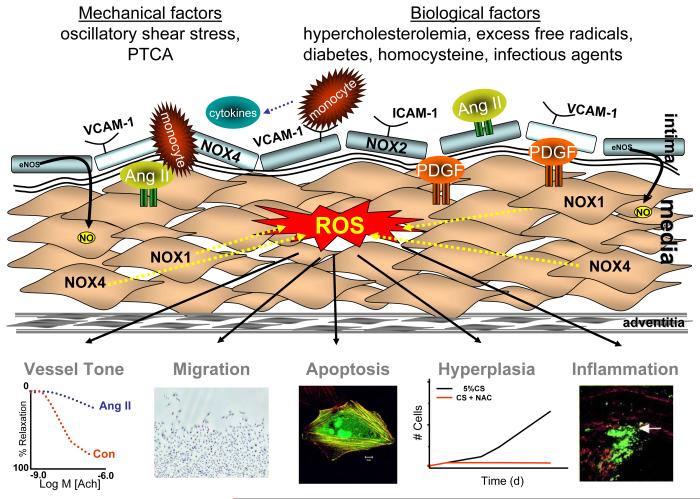Figure 3.
Role of ROS in the response to injury. Reactive oxygen species mediate many of the responses to vascular injury. Both mechanical factors and biological factors produced in response to injury can stimulate the production of reactive oxygen species in macrophages, endothelial cells, smooth muscle cells and adventitia. These ROS then impair vessel tone and promote an inflammatory response, and increase smooth muscle cell migration, proliferation and apoptosis. Figure depicting migration shows VSMCs migrating into a wound area stained with hematoxylin and eosin after stimulation with PDGF. Figure depicting inflammation shows the shoulder region of a plaque stained for macrophages. Adapted from (Sorescu et al. 2002) Figure depicting apoptosis is a GFP-transfected cell stained with phalloidin. (Courtesy of Alicia Lyle)

